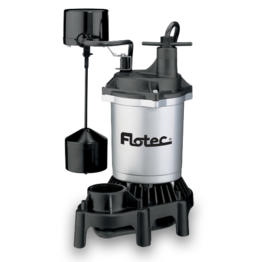
How Plants Uptake Nutrients
Nutrients play an important role in many plant processes. Nitrogen, for example, is a component of both amino acids (the building blocks of protein) and chlorophyll (the green pigment present in all plants). Phosphorous is essential to the formation of a plant’s DNA and RNA, and potassium is crucial to growth regulation and photosynthesis. Aside from these three, there are many other macro- and micro-nutrients that plants need in order to be healthy. Nutrients must be dissolved in water in order for plant roots to uptake them, whether plants are growing in a hydroponic solution or in soil.
Physical Method of Nutrient Uptake in Plants
The Cohesion-Tension Theory describes the physical way in which plants draw nutrients from the growing media, up through the xylem (vascular tissue in plants that moves nutrients upward) and into the leaves.
All plants transpire, or release water through the stomata (tiny pores in the surface of leaves). As transpiration happens in the leaves, it creates a negative pressure, or tension in the leaf tissue as well as in the xylem. This tension wields a pulling force on the water in the xylem and pulls the water upward and, in turn, pulls dissolved nutrients up from the soil.
Cohesion is the term used to describe the act of water molecules sticking to one another and filling the “tube” in the xylem, much in the same way that blood fills a blood vessel. Cohesion is the reason that water molecules stick together, move together, and act as one giant molecule of water.
Capillary action is how water begins to enter the root from the soil. Capillary action is when a liquid moves across the surface of a solid because of adhesion. Adhesion forces water up the tube in the xylem, just as water is forced up a straw when it is placed in a glass of water.
The last piece of the nutrient-absorption puzzle is the casparian strip, a layer of the root’s cell wall. The casparian strip is a crucial barrier that prevents roots from leaking nutrients and water back out into the soil. It also prevents against attack by microorganisms and pathogens.
See For Yourself!
You’ll need: a glass filled with water, and a clear straw
1. Place the straw in the glass. Notice how the water moves up the sides of the inside of the straw. This is capillary action at work.
2. Suck the water from the top of the straw. The water molecules are pulled together as one unit up through the straw. This is because of the cohesion-tension theory. The negative pressure placed at the top of the straw draws the water from the glass upward and into the person’s mouth.
Decomposition
There are two sources of nutrition for plants growing in soil. The first is decomposition of organic matter, and the second is fertilizer, which we’ll come back to later.
Decomposition is the breakdown of organic matter into its elemental form, which is composed of the various minerals that are essential for plant growth. If you’ve ever kept a worm bin or a compost pile, you know that what you put in- leaves, vegetable scraps, banana peels, etc.- is vastly different than what comes out after several months time. Once the organic matter is fully decomposed by worms, bacteria, and other decomposers, a dark brown nutrient-rich soil is formed, known as humus. The nutrients from the humus, however, need water to be available for plants to take up. Without water, there is no way for plant roots to utilize these nutrients.
Fertilizer
Fertilizer is added to the soil either as synthetic fertilizer or organic fertilizer, and plants cannot tell the difference between the two. The purpose of fertilizer is to feed the microorganisms in the soil, such as bacteria and fungi. All of the living components in the soil must be protected, so fertilizer is applied in a lower concentration compared to hydroponic nutrients. Microorganisms break down the fertilizer into a form that is usable by plant roots.
A hydroponic system is a sterile environment and there is no soil- therefore there aren’t any microorganisms for the plant roots to depend on. Hydroponic nutrients are already dissolved in water, so plant roots directly absorb them. This eliminates the middle step of those soil organisms in hydroponic systems, and makes the nutrients more directly available to roots. Hydroponic nutrients are higher in concentration because there are no organisms that need to be protected in these systems.
Hydroponic nutrients can’t be used in a traditional soil garden at the recommended concentration because it will kill all the microorganisms in the soil.
It is important to recognize the difference between fertilizer and hydroponic nutrient solution, and to remember that the two are not interchangeable. For more information on the differences between the two, check out the Hydroponic Nutrients article.

Hydroponic Nutrients

EC vs TDS

Organic Does Not Mean “No Pesticides”

What is Aquaponics

What is Aquaculture
Trackbacks and pingbacks
No trackback or pingback available for this article.
Articles
Featured
-
 Submersible Thermoplastic Sump Pump 1/2 HPRegular Price $269.00
Submersible Thermoplastic Sump Pump 1/2 HPRegular Price $269.00 -
 Five Tower Strawberry GardenRegular Price $2,799.00
Five Tower Strawberry GardenRegular Price $2,799.00 -
 Tri-Helix Solar WindmillRegular Price $4,399.00
Tri-Helix Solar WindmillRegular Price $4,399.00 -
 Thermoplastic Irrigation Pump 1 HPRegular Price $469.99
Thermoplastic Irrigation Pump 1 HPRegular Price $469.99 -
 Drain Dish & Diffuser Dish Set 5 PackRegular Price $69.95
Drain Dish & Diffuser Dish Set 5 PackRegular Price $69.95 -
 Chemilizer InjectorRegular Price $349.99
Chemilizer InjectorRegular Price $349.99 -
 EzGro Precision Micro TrimmerRegular Price $11.99
EzGro Precision Micro TrimmerRegular Price $11.99 -
 EzGro Patio GardenRegular Price $389.99 – $399.99
EzGro Patio GardenRegular Price $389.99 – $399.99 -
 Five Tower Deck GardenRegular Price $2,499.00
Five Tower Deck GardenRegular Price $2,499.00 -
 Drain Dish & Diffuser Dish Set 10 PackRegular Price $124.99
Drain Dish & Diffuser Dish Set 10 PackRegular Price $124.99









Leave a reply